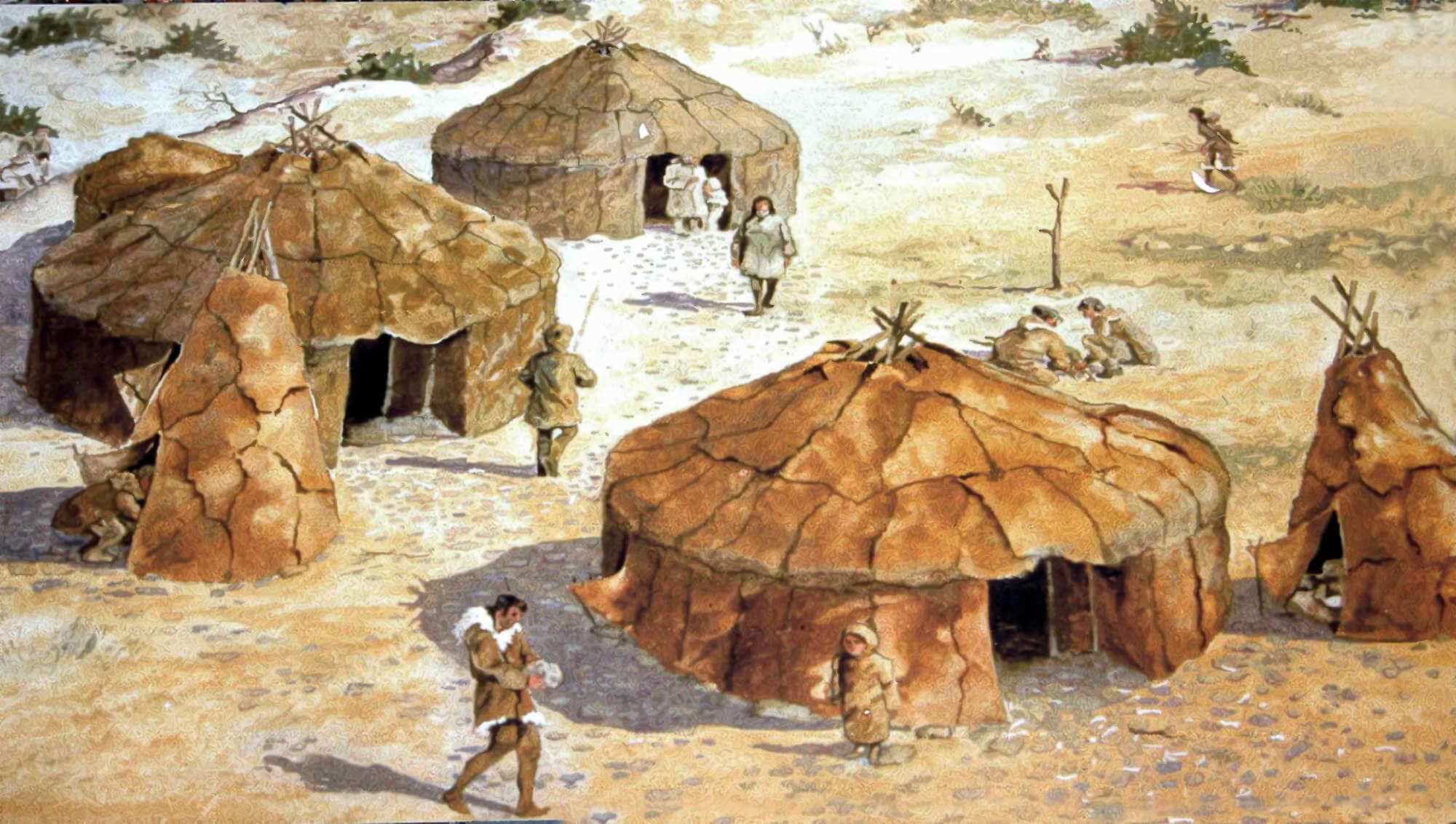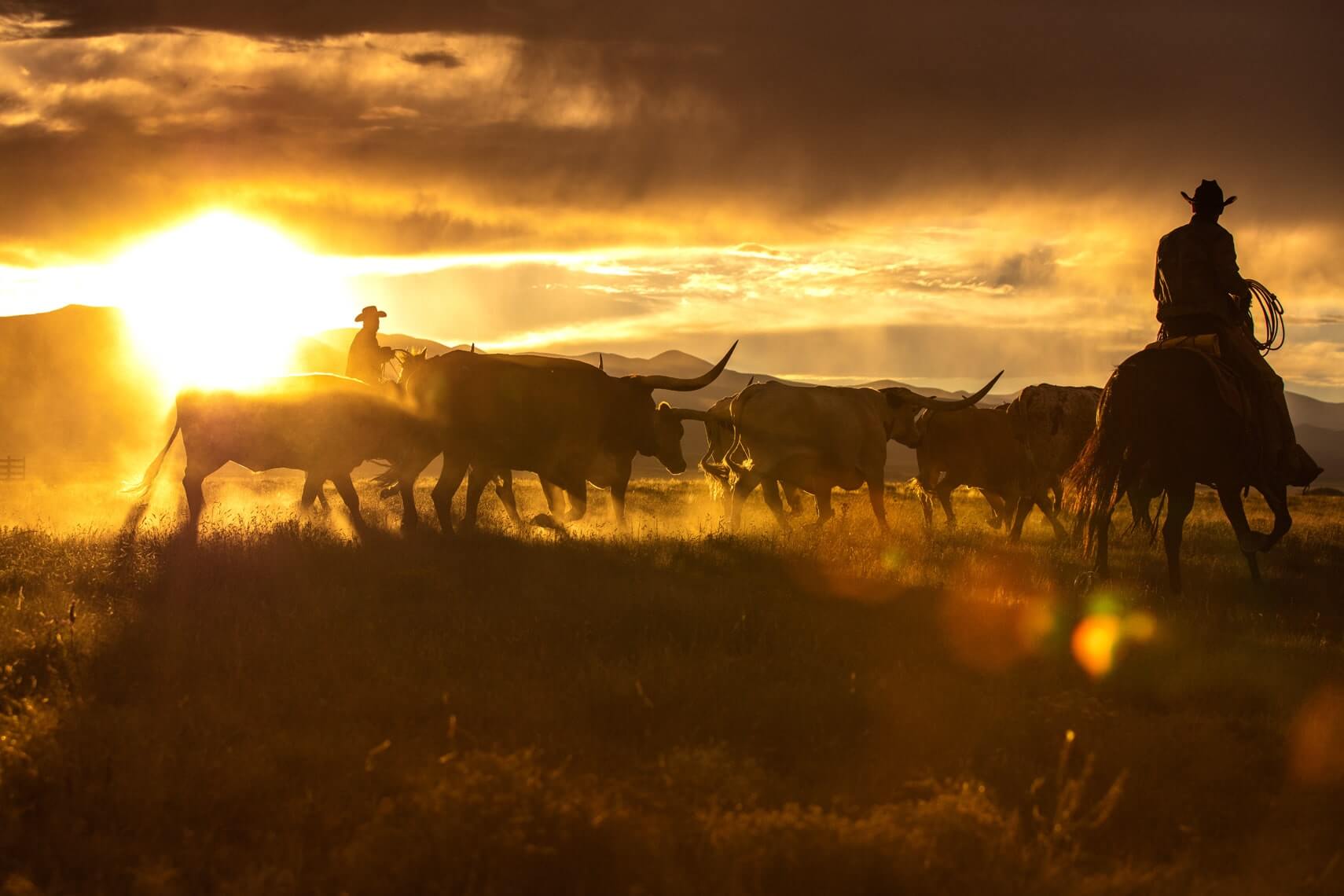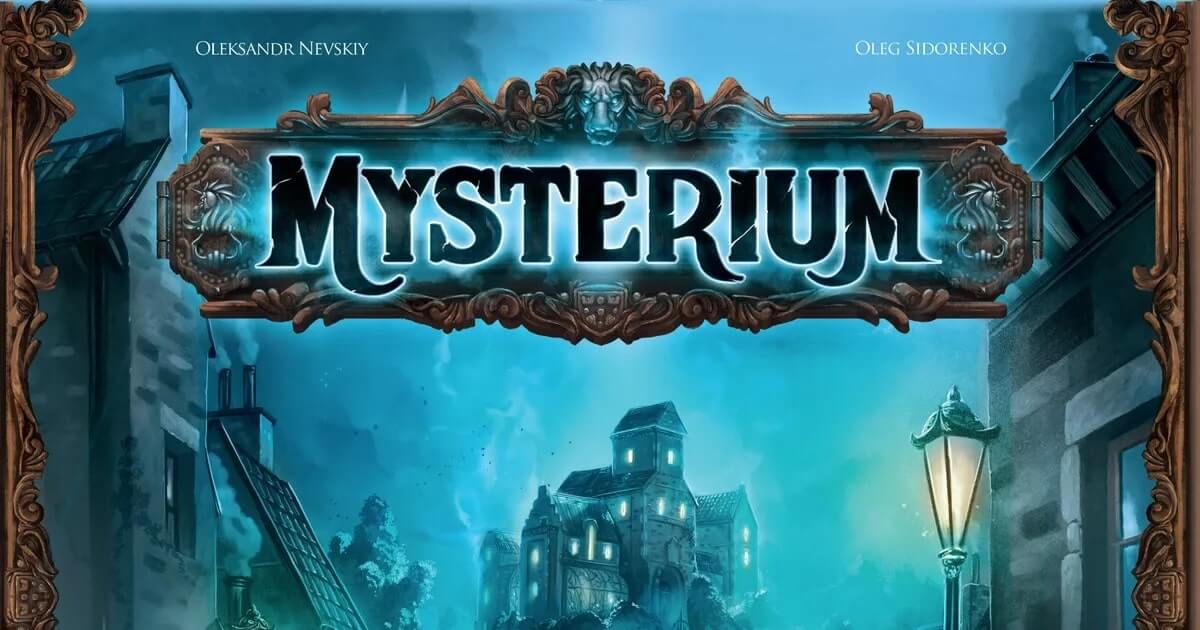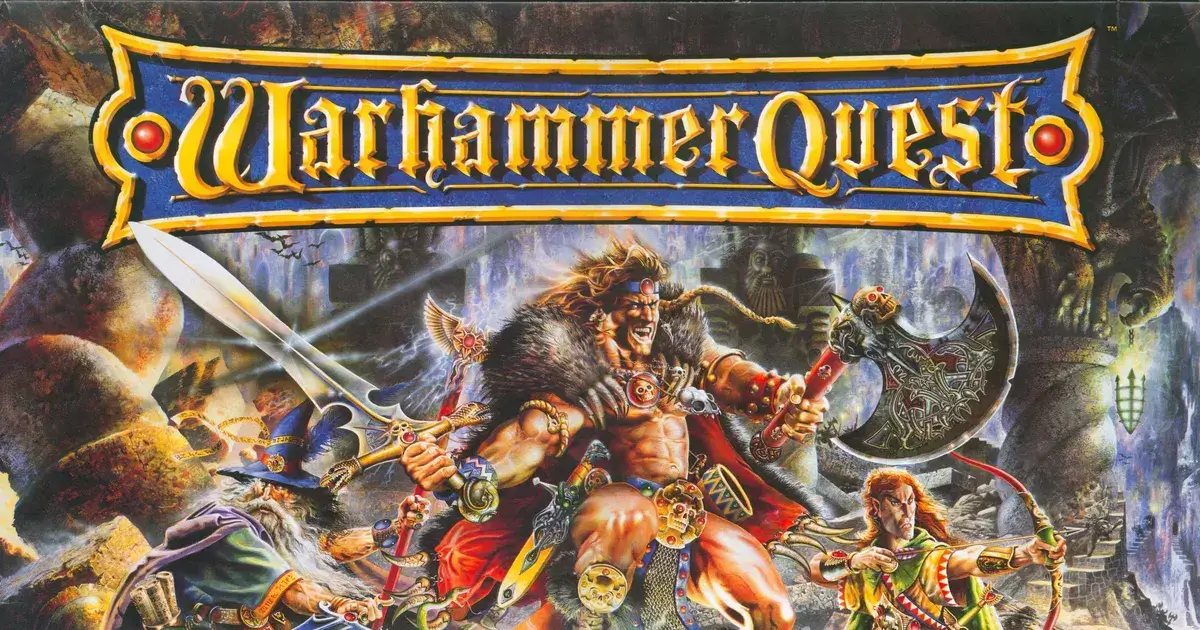In the time of the Stone Age, life was harsh and unforgiving for humans. The people had to struggle each day simply to survive. They hunted wild animals, foraged forests for nuts and berries, and caught fish in the rivers and streams for food. But that was just the beginning.
The people living in the Stone Age needed to gather resources like wood, clay, stone, and even gold in order to construct their shelters, homes, and tools. This was no simple task. They had to venture out through the forests and mountains, fending off wild predators whilst dealing with hazardous terrain and harsh weather.
But the people of the Stone Age were anything but weak. They developed their skills and were able to efficiently recognize the right types of trees, rocks, and soil that held the resources they required. They created new tools and methods for extracting these resources from the land.
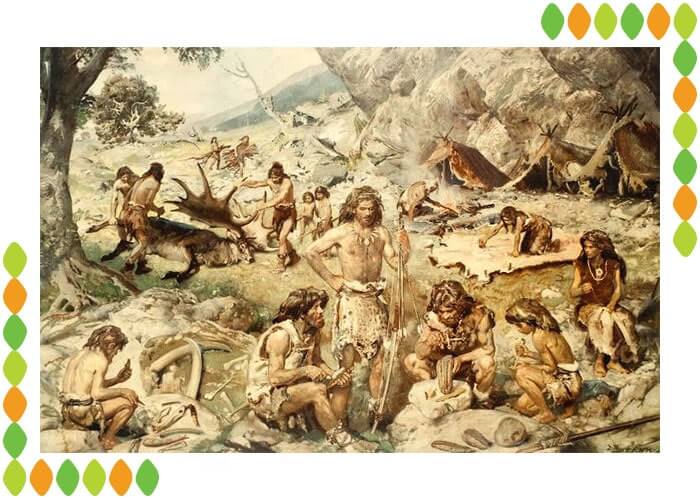
But despite their abilities and laborious efforts, establishing a tribe was never simple. The Stone Age population encountered numerous challenges along the way. And in order to access the same resources, they had to compete with other tribes.
And as they improved their abilities to gather and use resources, they started to create the foundation for the magnificent civilizations that would last for many years. They paved the way to come up with innovative farming and animal husbandry techniques as well as spectacular buildings and monuments that still stand today.
So if you want to take a step back from the bustling modern world and experience the struggles of our pre-historic ancestors, keep on reading to learn all about the board game, Stone Age!
Stone Age Board Game Overview; Enter the Prehistoric World
Stone Age is a worker placement strategy game designed for two to four players. While its main mechanic is worker placement, it makes great use of resource management and dice rolling as well. And because of its simple rules and intuitive and swift gameplay, it makes a great gateway game for those who want to dip their feet in the ocean of board games.
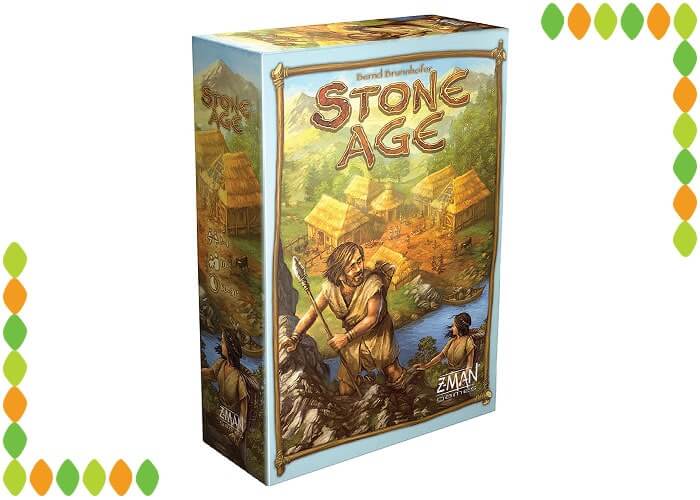
In this game, players manage a village and its tribe members in the Stone Age period, collecting resources, hunting for food, building huts and etc. to gain the most points and establish the best tribe in the game. Players gain points by building structures and developing their civilization. The tribe with the most points is the winner of the game.
The game consists of a board with different locations for players to place their workers and gather food and resources, and develop their tribe. Each player begins the game with a small tribe and five workers, but they can grow their tribe as the game goes on.
Players collect food and resources by rolling dice. The number of workers in each location determines the number of dice players roll. It’s up to you to find the best combination of actions to get the most benefits from the game. Now let’s see how to play the game.
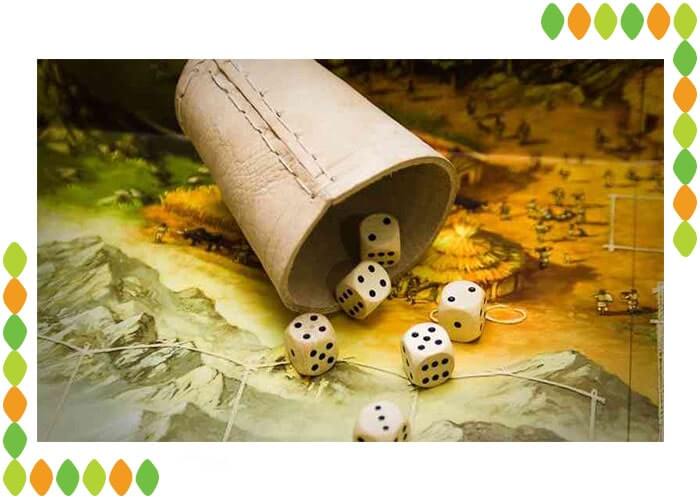
Stone Age Board Game Gameplay; Build Your Tribe
Stone Age’s gameplay is centered on resource management, as players gather food, wood, clay, stone, and gold to build structures and advance their civilization. The game offers a unique combination of luck and strategy, with players rolling dice to determine their resources and making decisions on how to allocate them.
Setup
To set up a game of Stone Age you must first prepare the game board. Separate the food tiles and the resource tokens and place them on the indicated locations on the board; food in the hunting grounds, wood in the forest, brick in the clay pit, stone in the quarry, and gold in the river.
Separate the tool tiles by value in two stacks and place them next to the tool marker. Some of the tools have ½ printed on either side, and others have ¾ printed on either side. Shuffle the civilization cards and form a face-down deck next to the board. Reveal cards from the deck depending on the number of players.
Shuffle the building tiles and create face-down stacks of seven tiles each. With four players, place all stacks on the game board, with three players three stacks, and with two players two. Reveal the top tile of each stack.

Each player chooses a color and receives a board, two markers, and ten workers in that color. Place the markers on the scoring track and the food track on the board. Also place five workers and 12 food on your village board. These workers are those in your possession. Put the remaining workers aside, for now.
Randomly choose a starting player and give them the first player token. And now you’re ready to take on the challenges of building a pre-historic tribe in the Stone Age!
How to Play
The course of the game is divided into three main phases; worker placement, actions, and feeding. In the worker placement phase, players plan out their actions for this round by placing their workers in different spaces across the board.
Starting from the first player going turn-by-turn clockwise, players choose a location and choose how many workers to commit there. The number of rings determines the number of workers that can be placed there. When hunting for food or gathering resources, players are permitted to place any number of workers they please, but other locations require only one or two workers. Take note that there are some restrictions for placing workers in different player counts.

Collecting Resources
After players have all placed their workers, the action phase begins. Starting from the first player, players collect their workers, performing their actions in their desired order. Collecting food or resources requires dice rolling. Let’s say a player has three workers in the hunting grounds and wants to hunt for food. First, they must roll three dice, equal to the number of workers. Add up the values of the dice and divide it by two (rounded down), this is the number of food collected. Let’s say the sum of the dice is 11; the player collects 5 food.
Gathering resources follows the same rule; roll dice equal to the number of committed workers. The difference is in the number you divide by. Every resource has a number printed next to it on your village board;
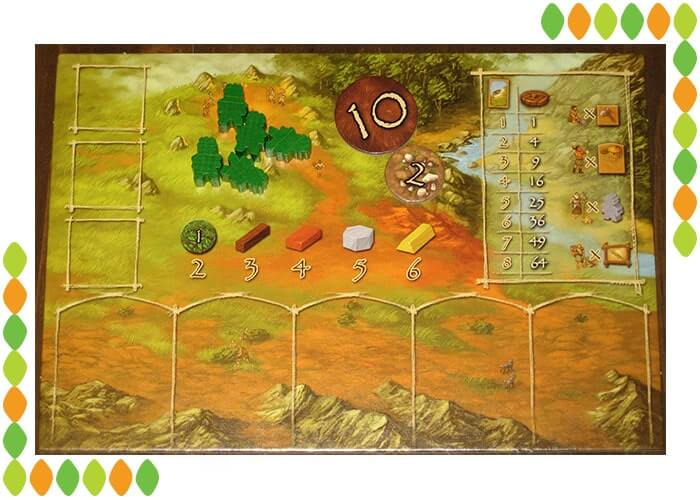
Food – 2
Wood – 3
Clay – 4
Stone – 5
Gold – 6
When gathering wood, you must divide the sum of the dice by three, when gaining gold, you must divide the sum of the dice by six. Therefore, the more valuable a resource is, the harder it is to obtain.
Actions in the Tribe
In order to raise your chances of collecting resources, players can collect tools from the tool maker. A player who has placed a worker in the tool maker gets a value 1 tool and places it on their village board. If that player visits the tool maker a second time, they get another value 1 tool.

Once a player has no more space for a tool and they visit the tool maker, they flip over one of their tools to increase its value to 2. If a player with three value 2 tools visits the tool maker, they return one tool to gain a value 3 tool. So, in order to get the value 4 tools, you’ll have to check in on the tool maker quite a few times.
These tools can be used to raise your dice rolls. Each tool can be used once per turn to add its value to a dice roll. You can rotate the tool 90 degrees to indicate you’ve used it this round, and rotate it back once a new round starts. This helps players overcome the random element of dice rolling by adding the strategy of collecting tools.
Players who want to place workers in the hut must commit two workers at once. What is the reason? It’s because two people + a hut = three people. Players who take back their two workers from the hut add another worker to their tribe from the general supply. Now for future rounds, you have more people to work with, but you also have more mouths to feed.
But you can develop a farming system by visiting the field. Every time a player performs the field action, they raise their food production by moving their marker one space up. This will make sense once we get to the feeding phase.
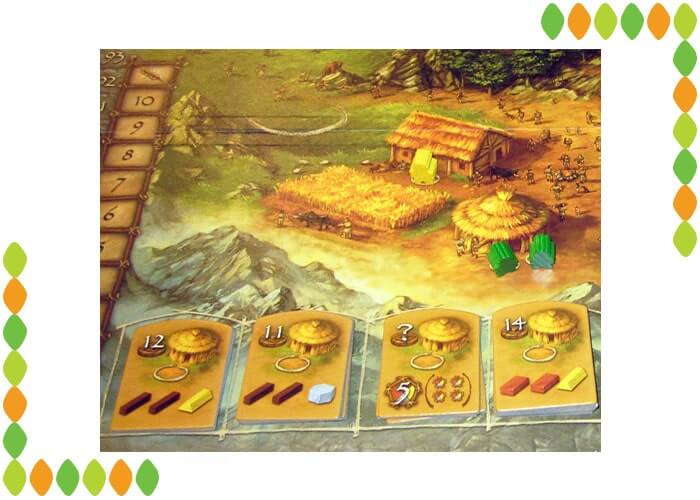
Spending Resources
Players can improve their tribe by purchasing civilization cards. To do so, players must place a worker on the desired card in the worker placement phase, and pay a number of resources depending on the position of the card. These cards have a top and bottom section each; the top parts grant various benefits, such as food, resources, food production, points, etc., and the bottom parts grant points.
These points are awarded at the end of the game based on either set collections (sets of unique symbols) or different criteria of your tribe, such as number of workers, food production, etc.
But players mainly get their points from constructing buildings. To do so, players must place a worker on the building and then, pay the depicted resources to build it and place it on their village board. The number of required resources is mostly fixed, but the type of resources is up to the players. After building, the player moves their score marker up on the track according to the tile.
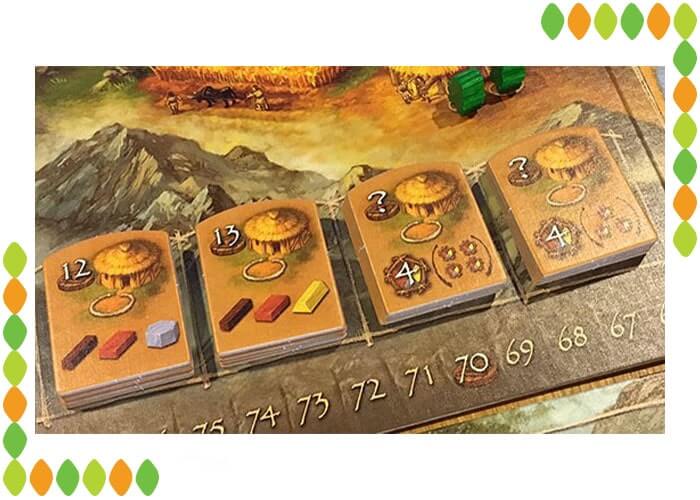
Feeding the People
And that’s all of the possible actions you can take in the game of Stone Age. Once all players have collected their workers and performed their actions, it’s time to feed the hungry tribe people; players pay one food for every active worker they have. But before that, players produce and collect food equal to their position on the food production track. If a player pays extra attention to raising their food production, they could be exempt from hunting until the end of the game.
If players don’t have enough food, they must discard all of their food, and spend one resource instead of the food. If they cannot or do not want to do this, they must reduce 10 points from their tribe. So always make sure you have enough food for your people, either by farming or by hunting.

After players have all fed their people, the first player gives the token to the next player and a new round begins. The game continues in this way until one of the two end-game conditions occur;
- If there are not enough cards to refill the track of civilization cards, the game ends immediately.
- If one of the stacks of building tiles is depleted, the game ends at the end of the current round, after the feeding phase.
After that, players score points based on their civilization cards and add them to their current score. The tribe with the most points has created the perfect village and is the winner of the game.
Stone Age Board Game Expansions and Versions; Re-invent the Wheel
Stone Age isn’t one of those games you can play over and over again without getting tired. While the game has very engaging mechanics and encourages player interactions, it’s not a game of multiple paths and possibilities. You’ll be thinking about one thing every time you play Stone Age; get resources, purchase cards and buildings. Although there are methods to improve your strategy, it’s all essentially the same path. But this doesn’t at all mean that you won’t love the game. It even features two expansions that can make your experience more satisfying. Let’s see what we have here;
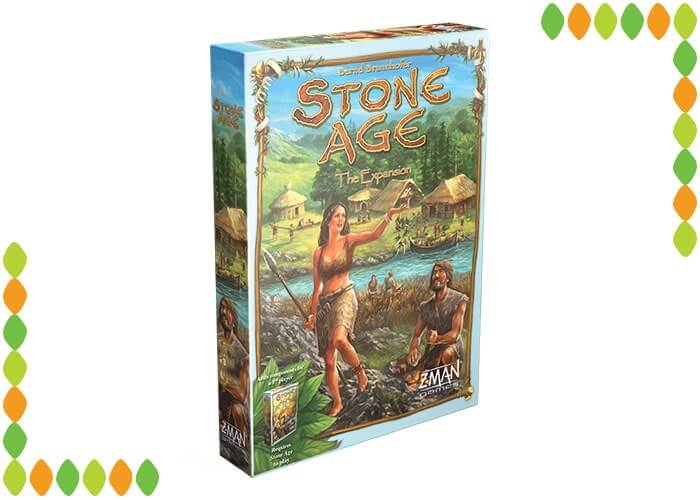
The first expansion of Stone Age is simply called Stone Age: The Expansion. This expansion adds some components and mechanisms to the game to make it more strategic and fun. It takes players further into the advancement of the Stone Age, as they find the desire to create and collect jewelry and they establish the concept of trade and merchants.
The expansion adds a precious and valuable resource to the hunting grounds; jewelry. This resource can be traded with the merchant to get other resources, or spent to purchase civilization cards. It also includes 15 new building tiles with new benefits and customization options. It even allows a fifth player to join the game.
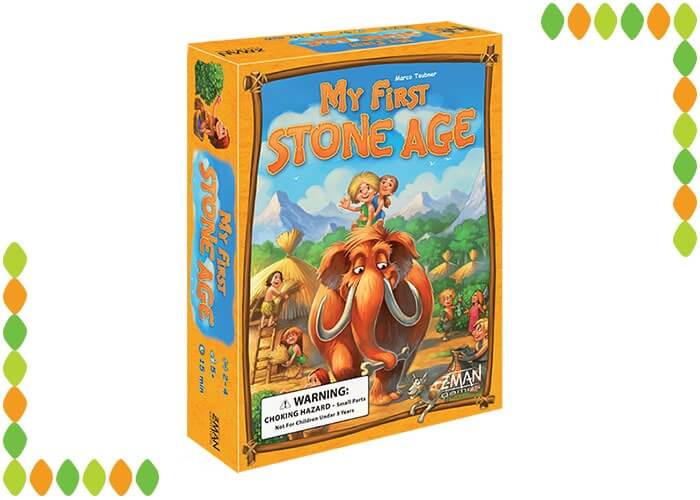
There’s also a mini version of Stone Age designed for kids called My First Stone Age (or Stone Age Jr. in Europe). This game takes a new approach to the core game, watering it down and simplifying it so that younger players can feel confident while playing it.
My First Stone Age reduces the strategy of deciding on actions by almost telling the players what to do. On each turn, players reveal a face-down tile from around the board that instructs them where to go and what resource to collect.
The main strategy of the game is memorizing each of the tiles so you can go for your own desired actions, as well as a trading mechanism where players trade resources from the in-game market. This game serves as a gateway game for children who want to start playing and enjoying Stone Age, and board games in general.
Final Thoughts
For those who love strategy and resource management games, Stone Age is a terrific board game that provides an exciting and immersive experience. Players are transported to a time when establishing a society was difficult and survival was tough, thanks to the prehistoric setting of the game which includes lovely artwork and detailed components.
To earn victory points and win the game, players must make wise choices regarding how to divide up their workforce, gather resources, and construct buildings. The dice-rolling aspect of the game keeps the action lively and unpredictable by introducing a random element to every turn.
But Stone Age is more than just a game of luck. In order to outsmart their rivals and create a successful civilization that can withstand the difficulties of the prehistoric world, players must also employ their abilities and skills. Stone Age is a game that is guaranteed to engage and delight, so gather your tribe, collect your supplies, and travel back in time to the Stone Age, you won’t be disappointed!

